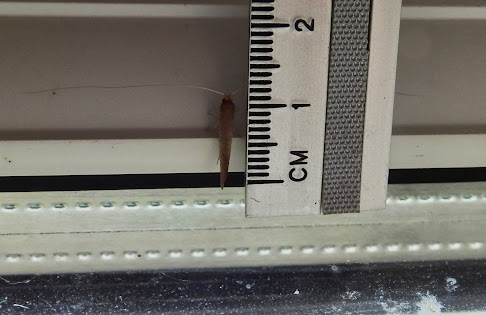You could argue that there has never been a better time to visit Earlswood Lakes. Workmen are swarming all over it, doing something major. As a result the water level is low and acres of mud and gravel have been exposed. If you are out for a pleasant stroll in the countryside don't go to Earlswood, but if you're a birder.....well, mud = waders.
Or at least it should. I decided to abandon Morton Bagot for the morning and see what I could find. I don't think I've been to Earlswood since I twitched the Night Heron in 2011 (and even that wasn't actually at the lakes when I saw it).
Morton Bagot is about two miles from our house, but Earlswood's only about four and a half miles away and has an enthusiastic and highly competent band of birders watching it regularly. I met one of these, John Oates, while I was there. He told me he had seen four Ospreys there this spring, and reeled off a tidy list of commoner waders which had also dropped in, the best being Greenshank.
By the time I came across John my list was at lower end of my hopes for the day. It included Little Ringed Plovers, Oystercatchers, and a Common Sandpiper. The latter was a year tick.
 |
| Little Ringed Plover |
My ears were faring better than my eyes. I had heard singing Garden Warbler, Reed Warbler, and a fly-over Yellow Wagtail.
Other tough Morton Bagot birds readily available were Common Terns, a Sand Martin perched in a tree (I have yet to see one perched at the patch) and numerous Great Crested Grebes.
 |
| Common Tern |
 |
| Sand Martin - back-lit unfortunately |
On joining John he pointed out a curious immature large gull which may or may not have been a hybrid, and was confounding even him. I had no chance. A Yellow Wagtail called, and he quickly spotted it parading on the shingle bank in front of us. By the time I got my camera out it was on its way, usual story.
He confirmed that today was a bit quiet on the wader front, and I didn't appear to have missed anything.
I can see myself coming here again in August or September, before the contractors finish and the place returns to normal.
And finally some moth news: I put the trap out and caught just three moths, but one was new for the garden. It was a large longhorn moth called Nematopogon swammerdamella, long antennae, long name. I had to measure it to satisfy @ukmothidentification that I had got the right species. It's the biggest of the genus with a forewing length of 11 mm.
 |
| Nematopogon swammerdamella |
 |
| Each antenna is longer than the width of the ruler |
Just seen something very similar to the Nematopogon in my front garden. Didn't hang around for me to fetch a pot though 😕
ReplyDeleteHi Mike, that was unlucky. Mine was clinging to the window frame.
Delete